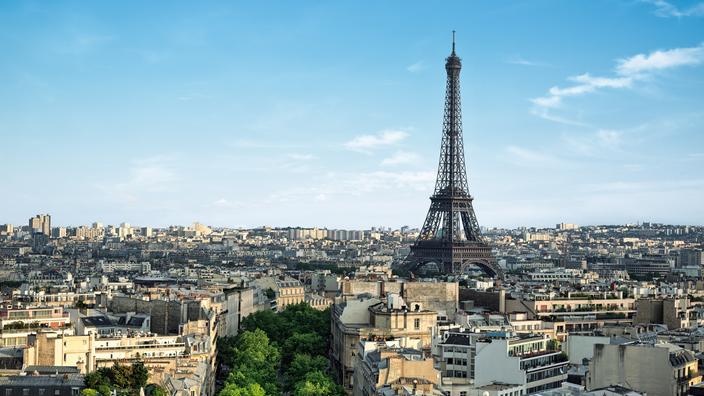The announcement of new health restrictions to cope with the resumption of the Covid-19 epidemic in Île-de-France is imminent.
To fully understand the economic stakes, we must keep in mind that the region generates 31% of the GDP of France and 4.6% of the GDP of the European Union.
This performance places her in front of Greater London, an administrative subdivision including London and its surroundings.
Île-de-France is the leading exporting and importing region of goods, generating 20.4% of French exports and 26.4% of imports.
Live: LIVE - Covid-19: Jean Castex and Olivier Véran's press conference postponed to 7 p.m.
Employment: 23.4% of salaried employment in France
Île-de-France has 5.9 million salaried jobs, which represents 23.4% of salaried employment in France.
34% of French executives are located in Paris, ie 1 in 3 executives. The tertiary sector generates more than 85% of jobs in the region.
But the coronavirus pandemic has strongly impacted the region with the loss of more than 95,000 private jobs compared to the end of 2019. Nationally, the trend has been quite similar with a loss of 320,000 jobs.
Companies: 1.16 million companies
The region has 1.16 million businesses.
By way of comparison, in second position, the Auvergne-Rhône-Alpes region has around 500,000 jobs.
According to the Fortune Global 500 ranking, which lists the 500 largest companies in the world, 28 have their headquarters in Île-de-France.
In 2020, 7,312 business failures were recorded in Île-de-France compared to 11,365 in 2019, which represents a drop of 34.1%.
This sharp decrease is mainly explained by the business assistance systems and the decrease in court-ordered liquidation assignments.
At the national level, the trend is relatively similar with a decrease of 38%.
Tourism: 1st world tourist region
In 2018, tourism consumption in Île-de-France reached 21.8 billion euros, out of a total of 107 billion for the whole of France.
It is considered the first tourist region in the world.
6.2 billion in economic benefits are generated by business tourism thanks to trade fairs and conferences.
The region has 700,000 square meters of exhibition space.
But since 2018, the situation has been difficult for tourism in the region.
In connection with the social movements of 2019, hotel attendance had already fallen.
A decline accentuated by the Covid-19 pandemic.
In September 2020, the number of overnight stays in Île-de-France fell by 69.5%.
As for air traffic, Paris Aéroport reached a new annual record in 2019 with 108 million passengers.
A beautiful development that collapsed.
Over the year 2020, passenger traffic at Paris Aéroport fell by 69.5%.
A phenomenon accentuated in January and February 2021 with a decrease of 73.5% then of 82.7.
Read also: Covid-19: new restrictions in Île-de-France and Hauts-de-France announced Thursday
Demography: 12.3 million inhabitants
The region is made up of 12.3 million, or nearly one in five French people.
However, Île-de-France is the second smallest region in France, behind Alsace, with an area of 12,012 square kilometers.
Higher education: 23% of university staff
704,600 students were identified in the Île-de-France region over the 2018/2019 academic year.
23.8% of students in French universities are concentrated in the region, including 10.6% in Paris.
The region accounts for 42.2% of private research and development spending.
Real estate: 54 million square meters of offices
54.5 million square meters of offices were listed in 2019 in Île-de-France with 28 billion euros invested in corporate real estate.
The crisis has brought down demand for offices in Île-de-France by 44.6% and the annual volume of sales is at its lowest with 1,321,000 square meters sold.
Real estate prices for individuals fell by 3% in Paris over the year 2020. Conversely, prices increase in the suburbs.
An increase of up to 3% in Val-de-Marne, Val-d'Oise, Seine-et-Marne or even Essonne.
Read also: Île-de-France: even if it means confining, Pécresse pleads for the weekend
Transport: 1.6 billion trips in the metro
The region generates 1.4 billion trips per year on the 13 regional train and RER lines and 1.6 billion trips on the 16 metro lines each year.
The entire network has 302 metro stations and 1,742 bus lines.
According to Moovit data, after a minimum level of attendance of around -88% observed at the first containment, traffic has been maintained since January 2021 at around 50% compared to the normal situation.
Data from CCI Paris and the Regional Directorate for Business, Competition, Consumption, Labor and Employment.

